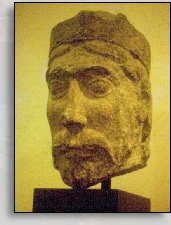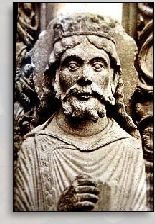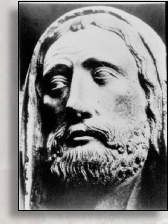What is Morphology?
You may have encountered the term Morphology in connection with growth of biological or botanical forms, or with regard to Darwin’s evolutionary thesis: organisms selectively develop in order to adapt to their environment. How, you might ask, would this maturational principle apply to a culture’s artistic language or to what art historians call Style?
This brief work attempts to scrutinize matters such as What artistic elements predictably vary as a culture (or an artist, in some instances) matures? How are these changes expressed? What role do the senses play in that evolution? Are value judgments useful in understanding phases in the development of Style?
Is it possible that something called “ego-consciousness” is a significant factor in how cultures (or artists) evolve? What is the vital difference between conceptual art and perceptual art, and how is that dichotomy important for an accurate understanding of morphological process? Early evolutionary cycles evidence concerns for tactile mass and symbolic meaning, then evolve toward balance and geometry, give way to focus on movement and space, then to light and color or to description and psychology.
Searching for characteristics of “adolescence” (primitivism) or “maturity” (classicism) in artistic output of a culture can be equally as fruitful as recognition of signs of “aging or ripening” (baroque consciousness) in later stages. To validate this metaphor of human maturation as a template of artistic development for whole cultures, it is of course necessary to compare cognate examples of artistic expression from many times and places in human experience.
The purpose of this study is to consider the elements of artistic language by which we can gauge the changing focus of successive generations of artisans, the aspects of creative expression which typically evolve over time in a seemingly-unerring pattern, and whether indeed these generalizations might have any relevance to the stylistic evolution of a specific artist over a lengthy career.
Following the Introduction and Prologue, successive chapters attempt to unfold an analytical basis for discussion of changing Styles in both haptic and visual forms of expression, culminating in Chapter 11, The Evolution of Style. It is here that the author’s indebtedness to the work of Dr. Alois Schardt is most evident. An unfortunate limitation of this theoretical venture is its failure to embrace arts of Eastern cultures, for the author’s experience has been largely focused on art of Western tradition. That essay is yet to be written.
Table of Contents
Introduction and Prologue
Chapter 1
Is it Art?
Chapter 2
The Work Itself
Chapter 3
The Artist’s Tools
Chapter 4
The Artist’s Motivation
Chapter 5
Modern Art or Primitive?
Chapter 6
Difference between Art and Life
Chapter 7
The Psychology of Art
Chapter 8
Sculpture: Add or Subtract?
Chapter 9
Painting: Direct or Indirect?
Chapter 10
The Quest for Reality
Chapter 11
The Evolution of Style


